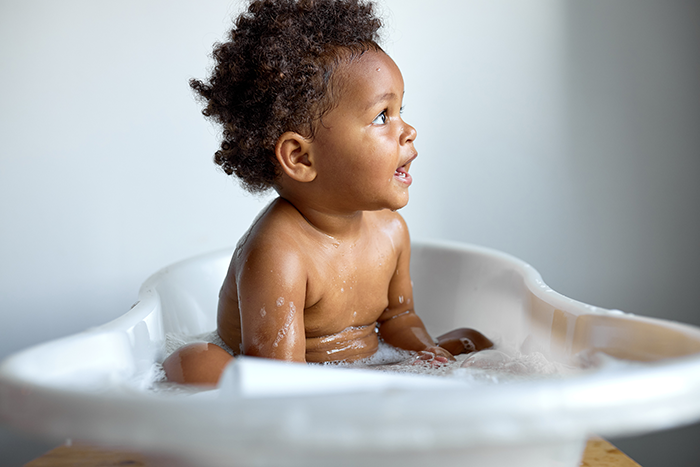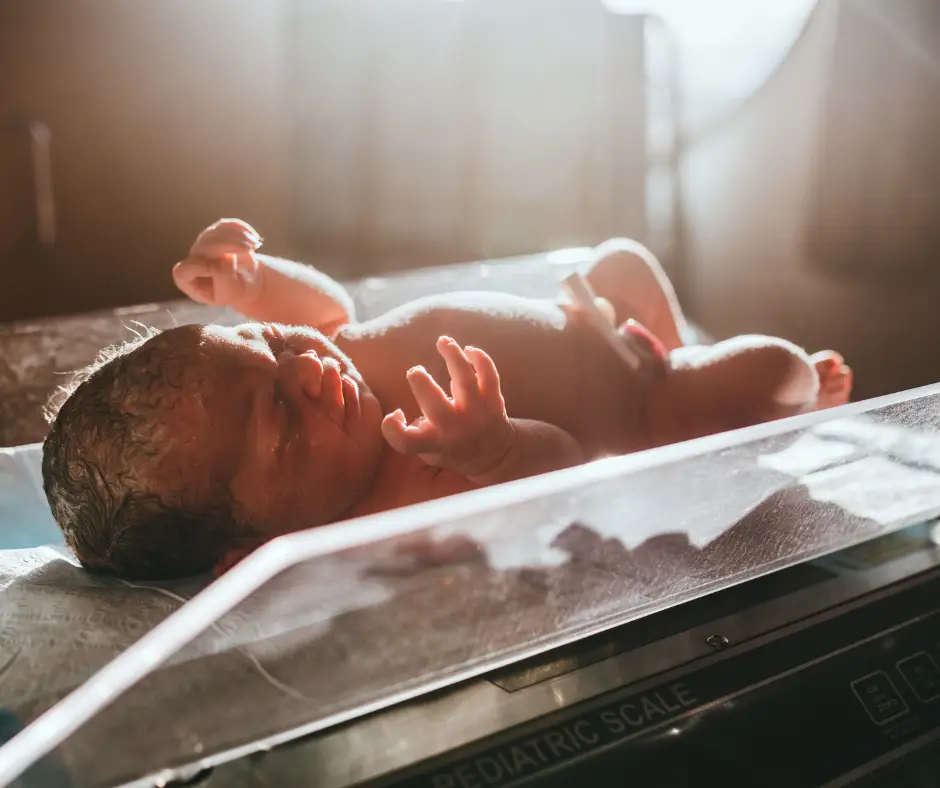
Hello, super parents! Ready to dive into the bubbly world of baby baths and skin care? Whether you’re a first-time parent or just need a refresher, we’re here to make bath time fun, safe, and beneficial for your baby’s delicate skin. Plus, we’ll bust some common myths and give you expert-backed tips for post-bath care!
How Often Should You Bathe Your Baby?
Less is More!
Newborns don’t need daily baths—three times a week is plenty during their first year! Their skin is delicate, and too much washing can lead to dryness and irritation. On non-bath days, you can clean their hands, face, and diaper area with a warm, damp washcloth. (HealthyChildren.org)
For babies 3-6 months:
Bathe 2-3 times per week, or as needed for messy situations (hello, diaper blowouts!)
Sponge baths are great between full baths.
Drool, milk, and food spills? Just wipe them down with a warm washcloth.
Before the First Splash: Bathing Basics
When to Start: Wait until the umbilical cord falls off (around 1-2 weeks old) before giving a full bath. Until then, stick to sponge baths. (AAP)
Best Time for a Bath: Choose a time when your baby is calm and alert—not right after feeding or when they’re super hungry. Evening baths can be a great way to help them relax before bedtime!
Water Temperature Matters: Keep the water warm (about 100°F or 38°C)—not too hot, not too cold! Use your wrist or elbow to test it. (Mayo Clinic)
English/Spanish guide:
Step-by-Step Guide to Baby’s Bath
1. Set Up Everything First:
A soft towel Mild baby soap and shampoo (fragrance-free is best!)
A cup for rinsing
A diaper and clothes for after bath time
2. Fill the Tub:
Use only 2-3 inches of water—enough to keep baby warm but not too deep.
Never leave the baby alone in the water—not even for a second!
3. Wash Gently:
Start with their face—use a soft washcloth to wipe around their eyes and mouth.
Use baby-safe soap only on areas that need it (like hands, feet, and diaper area). Too much soap can dry out their skin!
Last step? Hair! Use a gentle shampoo if needed, but babies don’t need hair washed every bath.
4. Rinse and Wrap Up:
Use clean water to rinse off soap.
Wrap baby in a soft, warm towel right away. No scrubbing—pat them dry gently!
Post-Bath Skin Care: Lock in the Moisture!
Moisturize Right Away!
After patting your baby dry, apply a hypoallergenic, fragrance-free baby lotion within 3 minutes to help lock in moisture. This is especially important in winter months when skin dries out more easily. (AAP)
Diaper Time:
Make sure baby’s bottom is completely dry before putting on a diaper.
Use a diaper cream if needed, especially if you notice redness.
Dress for Comfort:
Choose soft, breathable fabrics to prevent overheating and irritation.
Avoid tight clothes that can rub against sensitive skin.
Bonding in the Bath: Make It Fun!
Bath time isn’t just about getting clean—it’s a perfect bonding opportunity!
Sing or Talk to Your Baby: They love hearing your voice!
Use Bath Toys: Simple floating toys or a cup for pouring water can make it fun.
Maintain Eye Contact and Smile: This reassures your baby and helps them feel safe.
Baby Massage: After the bath, a gentle massage with baby lotion can help relax your baby before bedtime. (Mayo Clinic)
Myths & Misunderstandings About Baby Bathing & Skin Care
MYTH #1: “You need to bathe your baby every day.”
FACT: Nope! Too many baths can dry out their skin. 2-3 times a week is enough!
MYTH #2: “Baby powder is a must-have.”
FACT: Pediatricians don’t recommend talc-based baby powder—it can cause breathing issues. Cornstarch-based powders can be used sparingly. (AAP)
MYTH #3: “If a baby has dry skin, skip the lotion.”
FACT: Babies can get dry skin, and using a gentle, baby-safe moisturizer is a great way to keep their skin healthy!
MYTH #4: “Cradle cap means poor hygiene.”
FACT: Nope! Cradle cap is harmless and not caused by poor hygiene—just a normal phase in infancy. Use a gentle baby shampoo and a soft brush to help remove flakes.
Safety First: Quick Reminders!
Never leave your baby alone in the bath—not even for a second!
Keep everything within arm’s reach before starting the bath.
Use fragrance-free, hypoallergenic products to prevent skin irritation.
If you notice any persistent rashes, dryness, or redness, talk to your pediatrician.
Video Resoruces:
English
Spanish
Additional Resources:
County Health Departments – Infant Hygiene & Health Guidance
1. Westchester County Department of Health – Maternal and Child Health
- Phone: (914) 813-5000
- Website: https://health.westchestergov.com
- Description: Offers guidance on baby care, including safe bathing practices, skin care for common issues like diaper rash, and product safety information.
2. Putnam County Department of Health – Child Health Services
- Phone: (845) 808-1390
- Website: https://www.putnamcountyny.gov/health
- Description: Supports parents with infant health and hygiene education, including bathing frequency and skin condition monitoring.
3. NYS Growing Up Healthy Hotline
- Phone: 1-800-522-5006
- Website: https://www.health.ny.gov
- Description: Offers advice on newborn and infant care, safe bathing products, and connects families to local public health services.
Pediatric Health Clinics & Services
4. Open Door Family Medical Center
- Locations: Ossining, Mt. Kisco, Port Chester, Sleepy Hollow, Brewster
- Phone: (914) 632-2737
- Website: https://www.opendoormedical.org
- Description: Provides comprehensive pediatric care including education on bathing routines, managing baby skin conditions, and safe soap or lotion use.
5. Sun River Health (formerly HRHCare)
- Peekskill Pediatric Site: (914) 734-8530
- Website: https://www.sunriver.org
- Description: Community health center offering infant health checks and caregiver guidance for bath time, product reactions, and skin hygiene.
Nutrition & Skin Care Education
6. WIC – Women, Infants, and Children Program
- Westchester WIC: (914) 995-6350
- Putnam WIC: (845) 279-6997
- Website: https://www.health.ny.gov/prevention/nutrition/wic
- Description: Offers infant nutrition support and education on baby-safe hygiene products and moisturizing routines, especially for sensitive skin.
Parent Support & Developmental Programs
7. Child Care Council of Westchester
- Phone: (914) 761-3456
- Website: https://www.childcarewestchester.org
- Description: Parent education workshops and caregiver resources including safe bath time practices and recommendations on bathing frequency and skin care.
8. Westchester County Early Intervention Program
- Phone: (914) 813-5094
- Website: https://health.westchestergov.com/early-intervention
- Description: Provides home visits and developmental support, including parent coaching on baby routines like bathing and hygiene.
9. Healthy Families Putnam (MISN)
- Phone: (845) 561-3575
- Website: https://misn-ny.org/healthy-families-putnam
- Description: Offers home-based parenting support, including guidance on bathing, infant care, and household safety tips during bath time.
National Pediatric Resources
10. HealthyChildren.org – American Academy of Pediatrics
- Website: https://www.healthychildren.org
- Description: Offers detailed articles on safe bath time routines, baby bathing tools, skin care product safety, and rash prevention.
11. Centers for Disease Control and Prevention – Infant Hygiene
- Website: https://www.cdc.gov/healthywater/hygiene/fast_facts.html
- Description: Offers CDC guidance on bathing safety, preventing skin infections, and safe water practices during bath time.
Bibliography: Trusted Medical & Government Sources
1️⃣ American Academy of Pediatrics (AAP) – Bathing Your Newborn
2️⃣ Mayo Clinic – Baby Bath Basics & Common Skin Conditions
3️⃣ National Library of Medicine (NLM) – Infant Skin Care Guidelines
4️⃣ Centers for Disease Control and Prevention (CDC) – Baby Skin Health & Hygiene
Now you’re ready to handle bath time like a pro! Enjoy those splashes, giggles, and snuggles. What’s your baby’s favorite bath time activity? Let us know!
Legal Disclaimer: The information provided by our nonprofit is for informational purposes only and not a substitute for professional medical advice, diagnosis, or treatment. Always consult a qualified healthcare provider for medical concerns. We make no guarantees about the accuracy or completeness of the information and are not liable for any decisions made based on it. If you have a medical emergency, call 911 or seek immediate medical care.


